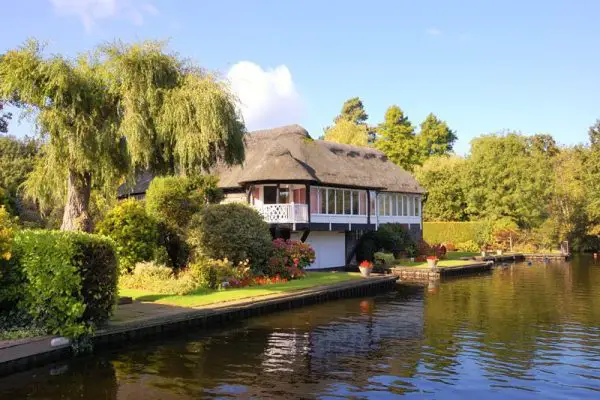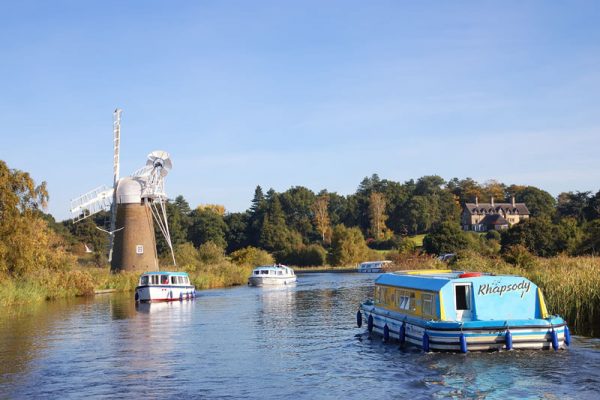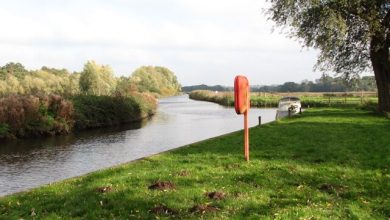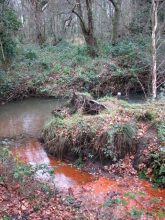Norfolk Broads Fishing—The River Ant

The River Ant. The Ant is unique as it is the only Broadland 1 river which actually feeds a broad. It enters at the northern end of Barton Broad, where one may take the courses upstream by boat to Honing Lock and floods in and out at the southern end, giving the broad colour and an ever-changing circulation of fish. Particularly roach and bream. The Ant’s watercourse is actually born in the village of Antingham where, from a large, shallow lake (private), it flows in a south-easterly direction through Swafield and on to the market town of North Walsham. The fishing in these upper reaches has greatly deteriorated over the years, and almost everywhere one finds cases of silting and dilapidation at the mills and around the bridges and locks. From North Walsham, where the Ant is canalised, it meanders down to Ebridge Mill. It is perhaps rather difficult for the visitor to accept that such large vessels as Norfolk wherries did actually sail upriver along the Ant here. When one considers the present state of silting and the fact that a wherry, when fully laden, must have drawn 3 feet of water, for the average depth here nowadays is about the same and, in many parts, even less. It is all actually known as the North Walsham — Dilham Canal downriver to the confluence with Taylor’s cut.
Beautiful Wroxham Broad, where anglers can enter from the River Bure through two gaps to enjoy the roach and bream fishing, plus good pike during the winter.
Two miles downstream from Ebridge Mill is Briggate Mill and then a one-mile stretch leading to Honing Common which can offer good roach fishing. There are also tench, bream, eels, pike, perch, and ruffe. From Honing Lock to Tonnage Bridge at Dilham one finds the same species with bream and roach predominating. It should be noted that motor cruisers cannot pass beyond Tonnage Bridge.
Fishing here can be rewarding during the winter months, but sessions in summer should be kept to late evening or early morning as the boat traffic may prove frustrating even this far upriver, bank access being extremely limited. About half a mile downriver from Tonnage Bridge, Dilham Cut joins the main stream from the southern bank. There is good fishing all the way up this navigable channel to Taylers at the top end, where navigation ceases at the road bridge carrying the Honing to Dilham road. Species to be found here are shoals of medium-sized bream to 4 lb. rudd, perch, fair roach and numerous pike.
A little further downstream from the Ant’s junction with Dilham Cut, Wayford Bridge spans the river, carrying the A149 road to Stalham, an excellent winter spot. Pike fishing is exceptional (though most are small) from here down to Barton Broad. One mile downstream from Wayford Bridge, Stalham.

Dyke enters from the left bank. This leads up to the boatyards at Stalham where one may hire dinghies or boats. Fishing can prove very rewarding from the boatyards, especially at the tail end of the season and the boatyard of R. Richardson where you can hire a boat and explore nearby waters. There is also a certain amount of free fishing from the public staithe. Stalham Angling Club have sole fishing rights to certain basins within Richardsons Boatyard complex. Enquire at reception for details. Halfway along Stalham Dyke, a short dyke leads in from the staithe at nearby Sutton where the fishing is entirely free from the roadside. But one requires a boat to fish the dyke itself, as the banks are privately owned. Access to the north bank of the Ant between Wayford Bridge and Stalham, along which one finds lovely Hunsett Mill, is via Chapel Field Farm, off the A149 road, a little west of Stalham.
This entire area offers excellent coarse fishing for bream, roach with some perch, tench, and eels and occasionally (among lots of jacks) and excellent pike. As with much of the Ant, sport improves from October onwards or dusk and dawn during the summer. Following on from the confluence of Stalham Dyke with the mainstream, there is just half a mile of reed-fringed river before the Ant enters Barton Broad (see ‘The Broads’). After furrowing down the length of Barton, the Ant emerges from its southern end as a river of changed character. The average depth has increased to around 6 feet with a good colour, over a silty bottom. The flow is often strong at times from here on, as the Ant passes through famous Irstead Shoals.
There is superb bream fishing from the bank along the public staithe at Irstead, particularly at night when the boats are dormant. Bream here run to over 5 lb. and roach average between 4 and 8 oz. Best tactics when night fishing are ledgering flake or maggots and utilising a quiver-tip if bites prove delicate. Daytime sport improves from late October with mixed catches of sizeable roach and bream. These are caught by anglers who trot or lay-on maggots anywhere along the three and a half mile course from Irstead through How Hill, Johnson Street and finally to Ludham Bridge.
Fishing is free on the right bank when walking upstream from Ludham Bridge with access for one and a half miles until a dyke stops progress. The entire area of Ludham Bridge becomes a hive of activity during high summer and, as with much of the Ant, only night and early morning sessions are really worthwhile. To concentrate on the bream, ledgering is best using flake, paste, maggots or redworms, rolled down on the bomb or stationary in conjunction with a block end swim feeder. Small roach and bream, together with eels, can nearly always be caught, but this is little consolation for the serious angler. And remember, it is now an offence NOT to return an eel when fishing with rod and line. This is an Environment Agency law, due to the lack of eels in most river systems.
The fishing drastically improves when the boats tie up for the winter, which is characteristic nowadays of most of the tidal rivers in Norfolk and Suffolk. However, for those wishing to boat fish, plenty of options throughout the broads. Leaving Ludham Bridge and the wide water, the Ant courses on its last half mile before joining forces with the Bure at Ant Mouth, just above St. Benet’s Abbey, with free fishing via the Environment Agency down to the old hundred dyke. The swims at this junction offer some of the best tidal river fishing in Norfolk, particularly during the summer and autumn for quality roach, hybrids, and bream. The Best tactics are to ledger on the bomb with a quiver-tip and baiting with maggots or bread flake, or trotting through with maggots and casters.
The northern bank from ant mouth by St. Benet’s Abbey down to Thurne Mouth is controlled by Norwich District Angling Association. Feel free to check out their website for up-to-date prices and locations.
For information on Norfolk Broads river bure fishing, click the blue text





Why visitors still make use of to read news papers when in this technological world everything is accessible
on web?